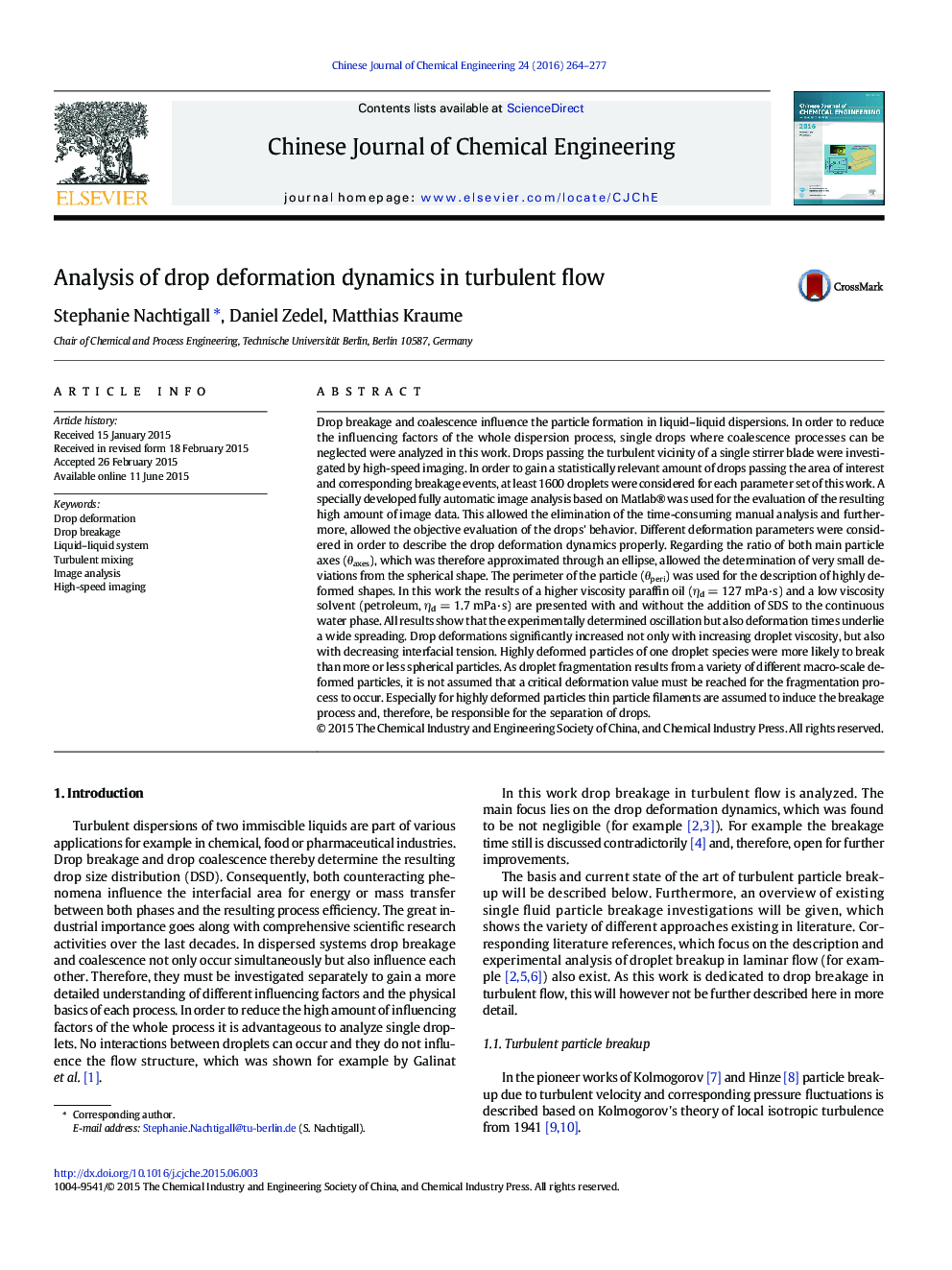| کد مقاله | کد نشریه | سال انتشار | مقاله انگلیسی | نسخه تمام متن |
|---|---|---|---|---|
| 166823 | 1423391 | 2016 | 14 صفحه PDF | دانلود رایگان |
Drop breakage and coalescence influence the particle formation in liquid–liquid dispersions. In order to reduce the influencing factors of the whole dispersion process, single drops where coalescence processes can be neglected were analyzed in this work. Drops passing the turbulent vicinity of a single stirrer blade were investigated by high-speed imaging. In order to gain a statistically relevant amount of drops passing the area of interest and corresponding breakage events, at least 1600 droplets were considered for each parameter set of this work. A specially developed fully automatic image analysis based on Matlab® was used for the evaluation of the resulting high amount of image data. This allowed the elimination of the time-consuming manual analysis and furthermore, allowed the objective evaluation of the drops' behavior. Different deformation parameters were considered in order to describe the drop deformation dynamics properly. Regarding the ratio of both main particle axes (θaxes), which was therefore approximated through an ellipse, allowed the determination of very small deviations from the spherical shape. The perimeter of the particle (θperi) was used for the description of highly deformed shapes. In this work the results of a higher viscosity paraffin oil (ηd = 127 mPa·s) and a low viscosity solvent (petroleum, ηd = 1.7 mPa·s) are presented with and without the addition of SDS to the continuous water phase. All results show that the experimentally determined oscillation but also deformation times underlie a wide spreading. Drop deformations significantly increased not only with increasing droplet viscosity, but also with decreasing interfacial tension. Highly deformed particles of one droplet species were more likely to break than more or less spherical particles. As droplet fragmentation results from a variety of different macro-scale deformed particles, it is not assumed that a critical deformation value must be reached for the fragmentation process to occur. Especially for highly deformed particles thin particle filaments are assumed to induce the breakage process and, therefore, be responsible for the separation of drops.
Figure optionsDownload as PowerPoint slide
Journal: Chinese Journal of Chemical Engineering - Volume 24, Issue 2, February 2016, Pages 264–277
